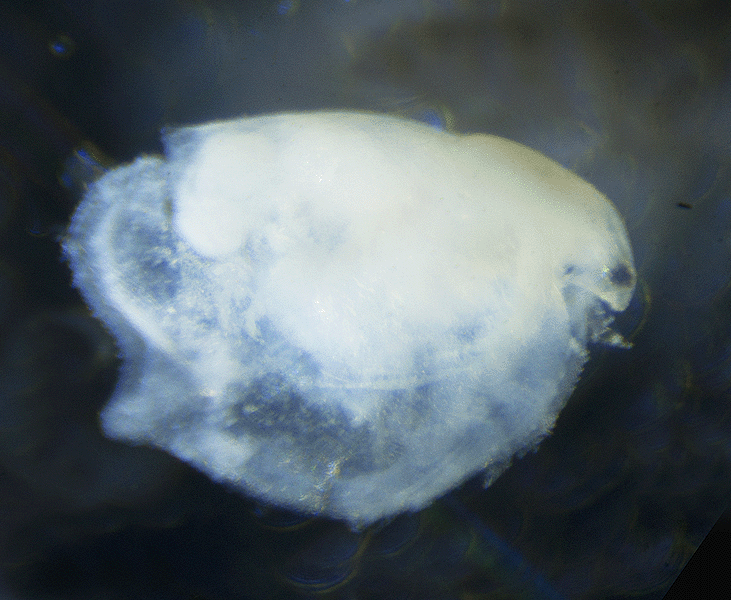Class Ostracoda in the Christopher B. Smith Preserve
Class Ostracoda Characteristics: Members of this class are small crustaceans, sometimes called seed shrimp. They are typically about 1 mm in length. Their bodies are flattened side to side, protected by bivalve-like chitinous or calcareous valves ("shells"). The hinge of the two valves is along the dorsal region of the body. The "shell" is replaced each time the animal molts.
Soft parts of the body, protected by the valves, consist of mostly a head and thorax. The body is not clearly divided into segments like other crustaceans. The abdomen is small or absent; adult gonads are relatively large. The head is the largest part of the body and has most of the appendages, including two pairs of well-developed antennae used for swimming, a pair of mandibles, and two pairs of maxillae. The thorax may have up to two pairs of appendages. Two "rami" (projections) from the tip of the tail point downward and slightly forward from the rear of the shell.
Ostracods lack gills, instead taking in oxygen through brachial plates on the body surface. Normally blood circulates between the valves of the shell; most ostracods lack a heart and circulatory system. Wastes are excreted through glands on the maxillae, antennae, or both. The primary sense for ostracods is touch. Sensitive hairs cover their bodies and appendages. They also have a single naupliar eye, which is a simple, median eye. Some species have a pair of compound eyes.
Reproduction can be sexual or parthenogenetic. The later type means the embryo develops from an unfertilized egg cell (ie. the adult female more or less clones itself).
As of 2008, ~2000 species in ~ 200 genera of nonmarine ostracods had been described. Half of those (1000 species in 100 genera) belong to only one of the 13 families, Cyprididae. Many Cypridids occur in temporary water bodies and have drought-resistant eggs.
Interactions in the Smith Preserve: Ostracods are part of the food web in the marsh and thus they help with the transfer of energy. Various species of ostracods are carnivores, herbivores, omnivores, scavengers and filter feeders. Some predatory ostracods attack prey in groups. Many predators, especially small fish, eat ostracods.

